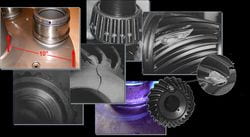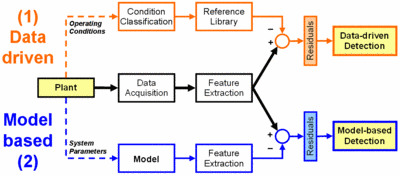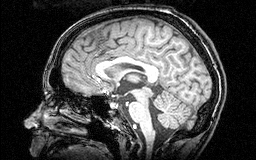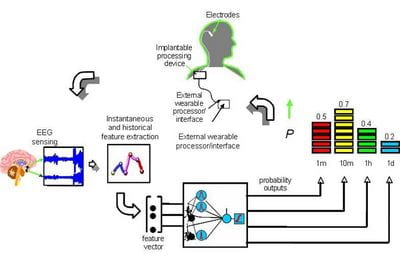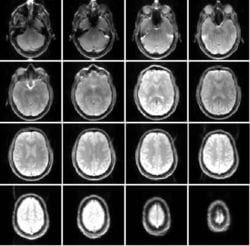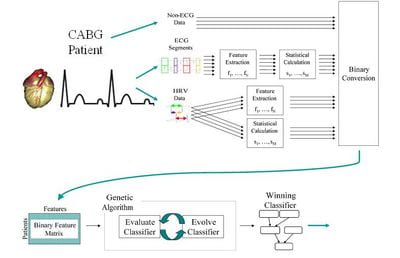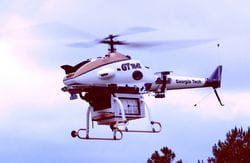Contents
Fault Diagnosis and Failure Prognosis for Engineering Systems
The Diagnosis and Prognosis Group of ICSL performs applied research for a number of industry- and government-sponsored projects in the following areas :
|
Click here for a quick |
|
||
|
||
|
||
|
||
Biomedical Engineering/Neurotechnology/Cardiotechnology/Sleep Research
|
The Intelligent Control Systems Laboratory (ICSL) has been actively involved in bioengineering research since the early 1990s, collaborating strongly with industry, as well as other institutions such as the University of Pennsylvania, Emory University and the Medical College of Georgia. There are currently various research projects in bioengineering at ICSL:
The University of Pennsylvania – Georgia Tech research has been funded by NIH, the American Epilepsy Society, NeuroPace, Inc., the Whitaker Foundation, the Charles Henry Dana Foundation, the CDC/GT collaborative research program seed grant and an Emory/GT research program seed grant. |
Unmanned Aerial Vehicles
| The Unmanned Aerial Vehicle (UAV) group develops algorithms that add to the autonomy of UAV systems such as the GTMax unmanned helicopter shown on the right. The group is currently studying tools for visual target tracking, adversarial reasoning, and automated see and avoid.
The ICSL laboratory has been actively involved over the past fifteen years in research on Unmanned Aerial Vehicles (UAVs). This truly interdisciplinary activity is conducted in collaboration with fault and students from Aerospace Engineering and Computer Engineering/Computer Science. The research team is promoting innovative control and software technologies as applied to single and multiple UAVs. |
The technology thrust areas include mission planning and control algorithms, active plant and control models, mode transitioning and real-time adaptive control routines, “see and avoid” or obstacle avoidance, target tracking and adversarial reasoning for multiple UAVs executing ISR missions in an urban warfare environment, and reconfigurable control strategies aimed at improving the autonomy and reliability of such critical assets. These research activities have been supported by the U.S. Army and DARPA. Brief descriptions of focused activities are listed below:
Micro Aerial Vehicles
Missions envisioned for Micro Air Vehicles (MAVs), such as Intelligence, Surveillance and Reconnaissance (ISR) in urban environments, require exceptional agility. These missions typically involve flight through or in close proximity to buildings, tunnels and trees, and require the MAVs to maneuver using sharp dives and climbs along with small-radius turns. The small size of MAVs allows such flight operations within confined space but the control effectors must provide sufficient maneuverability with only limited sensing capability onboard the platform while maintaining stable operation.
To meet these challenges, researchers have long been attracted by the amazing attributes of biological systems, such as birds and insects. Birds can fly in dense flocks, executing rapid maneuvers with g-loads far in excess of modern fighter aircraft, and yet never collide with each other, despite the absence of air traffic controllers. These and many other remarkable attributes of biological systems offer tantalizing opportunities to complement traditional engineering paradigms with emerging capabilities inspired by biological systems and processes.
We are presently developing a novel framework for the design, modeling and control of a Micro Air Vehicle (MAV). The vehicle’s conceptual design is based on biologically-inspired principles and emulates a dragonfly (Odonata-Anisoptera). We are borrowing flight mechanism features from the dragonfly and merging them with indigenous designs in creating a novel version of a Flapping Wing MAV (FW-MAV). The MAV design incorporates a complex mechanical construction and a sophisticated multi-layered Hybrid & Linear / Non-Linear controller to achieve extended flight times and improved agility compared to other Fixed and Rotary Wing and other FW-MAV designs. The Micro-UAV features state of the art sensing and instrumentation payload, which includes integrated High-Power on-board Processors, 6DOF inertial sensors, 3DOF compasses, GPS, Embedded Camera and Long-Range Telemetry capability. A 3-layer control mechanism is being developed for controlling the dynamics and navigation of the MAV. The inner-layer is composed of a hybrid controller and two higher layers implementing a linear controller, which will be replaced eventually with a dynamic adaptive non-linear controller. The advantages of the proposed design compared to other similar ones include higher energy-efficiency and extended flight endurance. The design/modeling of the MAV and its kinematics & dynamics are tested under simulation to achieve desired performance. The potential applications for such a high endurance vehicle are numerous, including Air-deployable mass surveillance in cluster and swarm formations. The disposability of the vehicle would help in battle-field deployment as well, where such a MAV would be made available to soldiers for proximity sensing and threat level assessment. Other applications would include search and rescue operations and civilian law-enforcement. The efficacy of the design is demonstrated through a simulation/visualization environment. The dynamics are verified through simulations and a General Linear Controller coupled with a non-linear controller is shown to operate the vehicle. In accordance with specified objectives a prototype (a simplified version of a dragonfly) is being developed for flight-testing and demonstration purposes.



